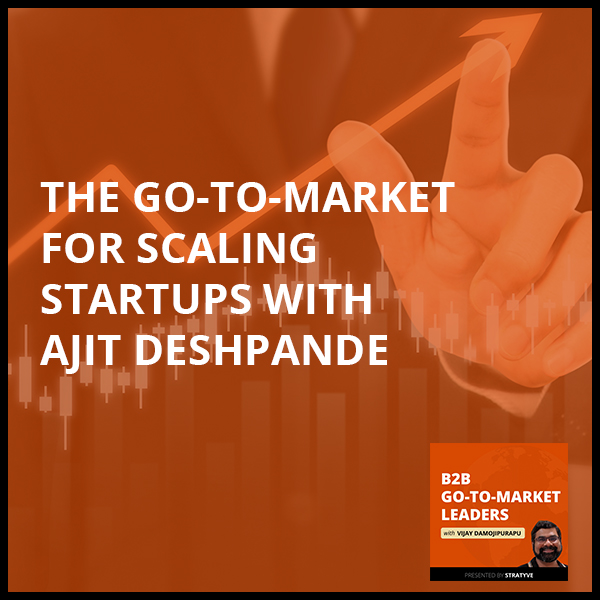
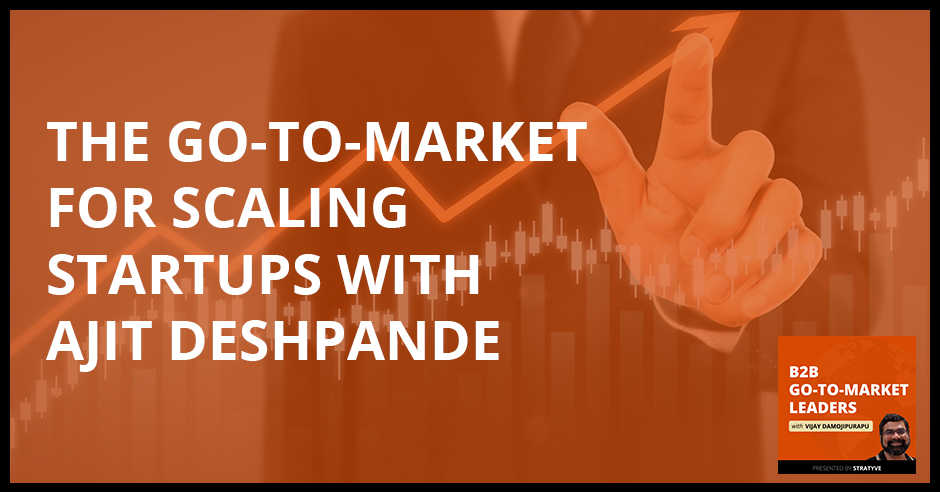
Businesses go from one level to the next. The further you are along, the more complex your business strategy will become. In terms of the go-to-market, startups and mature businesses also differ in their approach. Taking us through these stages, Vijay Damojipurapu invites Ajit Deshpande, the Vice President of Demand Generation at Marqeta, Inc. Here, Ajit shares his thoughts and observations between startups and businesses that are further along in the game and reveals some of the best practices of go-to-market leaders. He gives pieces of advice to leaders on building traction and scaling up—from marketing to leading a team with experimentation—and then reveals how they are working towards their goals in the company as a FinTech startup.
—
Listen to the podcast here
The Go-To-Market For Scaling Startups With Ajit Deshpande
I have with me Ajit Deshpande, the Vice President of Demand Generation at Marqeta, who is based out of Silicon Valley. Ajit has a unique profile and track record in the sense that he has grown in the ranks and in the roles of go-to-market oral function all the way from marketing planning, business operations, marketing leader role, now in Demand Gen. At the same time, he’s been active in the whole startup ecosystem. I’m looking forward to the conversation.
—
Welcome to the show, Ajit.
Thanks, Vijay, for having me.
I always like to start off with the real key question around the whole theme of this show which is around go-to-market. How do you define a go-to-market?
When you think of a corporate entity in any company, there are two main roles that exist in the company. One is the role of making something, whether it’s a product, service, software, or whatever and then there is the role of selling it. When you boil it down into those two things, go-to-market is the second half. For something that exists, how do you find the right customer for that product, service, or the solution that’s been made? Finding the right customer, reaching out, selling, retaining the customer in the long-term, and then hoping that the customer becomes an evangelist. That whole process or gamut is go-to-market. When you think of it in terms of corporate functions that will then contain marketing, sale, customer success, deployment, and it will include support operations. A lot of these teams work together to get the go-to-marketing going. That, to me, is a go-to-market.
I like the broad perspective that you bring to the table. This is a common theme that I’ve seen occurring with the go-to-market leaders I’ve been speaking with. It’s always a very holistic and broad perspective. The reason why I share this is I myself have been guilty of this whole process years ago when I started in product management or even a product marketing role. For me, back then, go-to-market is all about how to get this thing out of the launch door. It’s all about the launch process but over the years, my perspectives and insights have evolved.
It’s in line with what you shared and the various guests have been saying as well. It’s an inside view but at the same time, and more importantly, an outside view of, what is happening outside the company and how we tie those two things together? As you said, you build and innovate but how you take it to market. It’s an ongoing process. Share with the audience about your journey, how you started specifically go-to-market role? If you go back in time, how did you evolve your journey and how did you land at the role that you’re in now?
I’m an engineer by education and training. I studied mechanical engineering in India. I did my undergrad there then I came to the US.
You did your undergrad from one of the top Institutes in India.
At the Indian Institute of Technology in Bombay is where I finished. I immediately came after my undergrad to Stanford to do Master’s in Mechanical Engineering. I’m a hardware engineer by education. After that point, I did another eight years of engineering work all in the Bay Area in Semiconductors and then in Cleantech. I was a robotics engineer. I designed robots for these industries and it was all great. It’s quantitative, solid work, and satisfying in its own silo, so to speak. Part of it, for me, was I didn’t understand what happened after my work was done.
Marketing is just making the right offer to the right person at the right time. Share on XThese robots then got integrated into other systems. That system then would get sold to a customer. The customer would make chips and then those chips would come back to me through our laptops and then phones. It was a little bit of a roundabout existence to connect what I was doing, the end outcome for the consumer. I was always curious as to what being closer to the customer’s need and customer validation might feel like. I did go to business school with that intent, which was to transition out of engineering and into more of a business role. I didn’t know what I would do in business. I wanted to explore it. I went to Berkeley towards the end of the last decade and did my MBA there. During this time, I originally explored finance as a function.
I looked into multiple different streams within finance, investment banking, I did some Hedge Fund work, venture capital work, and I was doing all of this pro-bono exploration during business school. I realized that it was the technology piece of it that was still exciting to me. I tried my hand in venture capital and recruited into it heavily. I was able to get into the VC world at a firm called Opus Capital back in 2012. As it turned out, none of my hardware experience mattered because Opus focused on software investing for the most part even though it was B2B enterprise. They hired me partly for my drive and my perceived potential to figure things out.
When I went to Opus with all the hardware experience that I had, I had to learn everything from scratch. I had to learn about databases, networking, mobile SaaS, etc. In that process, what was logical for me was to look at all of these early-stage investment opportunities that the Opus came across. I came across from the lens of how these ideas would scale and get taken to market because I was not necessarily a technical architect that would get into the weeds of the product based on my previous experiences. The go-to-marketing came second nature to me as I was looking at startup. As I was doing that, I had a lot of these notions that are developed on how marketing, sales, and customer success might behave.
After two years of doing it, I started questioning whether I had the right notion in the first place. I decided to move from venture capital and try to get into the business side in a functional role. As I was recruiting, I was hired by Salesforce back in early 2014 onto their marketing team to lead business planning. I would never have expected myself to be a marketer at that time. For me, marketing was like any other aspect in go-to-market. It’s big in many ways, unsolved problems. You could think of it as a challenge and with first principles, you could solve all of that.
I thought it was an excellent opportunity for me. I went to Salesforce and marketing and then I spent five and a half years there learning about various facets within marketing whether it was the business planning piece that I started with or over time I scaled into various other aspects, mostly on the marketing operations, analytics, and strategy side but then in the process, I got exposed to marketing quite a bit. More so, I got exposed to a lot of top-notch people at Salesforce that is at the forefront of B2B marketing.
I learned a lot from them. I understood their psyche and my own psyche, so to speak, and I got more and more interested in that piece of it. Later on, I went from Salesforce to Stripe. A lot of it was driven by a couple of objectives. Number one, as I understood Saas to be an excellent go-to-market business model, I also had this notion that with all the consumption-based aspects that were happening in the FinTech world, that things might be different and interesting to understand. Stripe was one of the key companies that have been driving that thought process forward. I was at Stripe for a year where I was more in the finance team that supporting sales and marketing.
In that sense, I involved in go-to-market strategy but from the financial angle. After a year of doing that, I transitioned to marketer which is also in the FinTech space, smaller startup than Stripe but a leader in card issuing as the category. With that transition and back into the marketing role where I’m now responsible for Demand Gen, I go from high touch events to account-based marketing, inbound online paid, Demand Gen, SEO, and to marketing ops. A much broader scope across Demand Gen and it’s a way for me to contribute to this company’s success.
That’s a great journey there. I can go into several of those areas and we can have a deep dive discussion around those for the value and benefit of the audience. You clearly being very closely associated with the go-to-market when it comes to early-stage startups. When you were at Opus, you are seeing that and evaluating businesses from that point of view but at the same time, at the other end of the spectrum, you have been very closely involved with go-to-market for the more mature businesses at Salesforce and Stripe, and now at Marqeta. What are your broad thoughts, paradigms, or observations that you see on early-stage versus more mature?
One way to boil it down is that when you’re on early-stage or a small company, it’s pretty much hand-to-hand combat. You are going after that next customer, next small business, and next small vertical that used-case that you’re willing to put a lot of energy into winning. That’s the focus for a smaller company. What that also means is that the objectives are simple and the alignment across the go-to-market chain. When you think of marketing, sales, and customer success, everyone is extremely aligned on that objective. Once you go past a certain scale and you go into the large company more, you’re looking at aggregate sophistication.

Before we go into more of the larger scale, it’s easy to get the alignment between go-to-market functions like marketing sales, success, or support but the challenge is there’s no playbook into how, which market segment? Who is my customer, who within the customer, how will I engage them, who is the buyer, what is the buying cycle look like, it might hit my revenues, and forecast? It’s all topsy-turvy at least for the first couple of years until we hit scale. Any thoughts on that?
That’s the beauty of innovation and being in a startup because you’re trying to do something that is brand new. The existence of the lack of playbook being in place is a logical outcome of your own pursuit. It is in some ways a competitive advantage to come up with the thought process and a playbook to create that winning combination for yourself. With that said, the absence of a playbook is somewhat compensated by the simplicity of the objective, which is I need to figure out which customers might like my product. How do you find that out? You interview five prospects and you find the one that resonates on your thought process. There is a lot of manual needs to the work and a lot of ingenuity that has to be brought in but at the end of the day, because the goal is a relatively simpler goal to go for, the efforts can still bear fruit.
That’s broadly my thought process. Number two, when you think of go-to-market, matter product, user experience, or any aspect associated with the business, the logical first principles-based approach to looking at any of these situations typically will be a winning approach more often than not. Marketing is making the right offer to the right person at the right time. If you could find the right person, you could make the right offer when they are ready, you will succeed. The question is, how do you get it done?
Simple concept but hard to execute.
It is very hard to execute but you can use first principles and say, “This is how I can plan my work to get the best of what resources I have.”
Clearly, you’ve been very closely involved in startups, not just from an operational but even as an investor and advisor. If you look back and step back, what do you see the common 2 or 3 top recurring themes as best practices and something that you would share with founders and go to market leaders for the early-stage startup? I’m talking about seed or even Series A.
Is it from the standpoint of go-to-market?
Yes.
The few principles are objectives that any founders should have. I’m getting into a little bit of a philosophical thought process but hopefully, it’ll all connect together. Number one, one has to be extremely unbiased in their thought process. A lot of entrepreneurs and corporate individuals, entities are biased in terms of the potential for their product to succeed for what the customer may or may not want, etc. and that bias affects a lot of the decision-making. Can someone be unbiased in their thought process? Number two, always customer-centricity makes a difference. What does that mean? Any startup for success as to monetize what they are building. If what they’re building is not used by anyone then it makes no difference to the world that is a product.
Customer centricity always makes a difference. Share on XThey have bigger problems in the sense of entity will collapse.
That could be but more so, every action for individual and founder has an opportunity cost. That opportunity cost is they could be doing something else. If they’re putting their time into solving a problem then that problem is something that the customer needs. Being customer-centric and unbiased, those would be your starting points. Again, going back to first principles. How can someone envision the future? Can you imagine where you’d be five years from now? Can you slowly peel the onion back from five years later? What does that mean for next year? What does that mean for three years from now?
What is my five-year goal? If my five-year thought process is to be the dominant CRM company in the world, then how do I create the CRM market? How do I get ready to sell into it? What products do I need? What will the technology landscape be in five years? To be imagining it, boiling it down, and bring it back to the eventual tactical outcome, that’s the third aspect of it. The fourth piece of it, which is personal for me but in the startup world, this is something that a lot of successful founders to practice in the first place. It’s always to be doing something, iterating, getting to the next step, not be thinking about something, big strategic objective, and rather small wins will combine together to get to the final outcome.
Going back your first point, it’s all about having that intellectual curiosity. That’s how I term it. When you say unbiased, you need to be sincerely and seriously honest with yourself and led data. Sometimes, not always data will dictate but you need to be intellectually curious and honest with yourself. To your last point, it’s all about the market pull you in that direction. Switching back and going down to the more scaling part of the business which are being closely involved on a day-to-day operational basis over the last few years. Continuing on your thought process there, we are moving the needle from go-to-market for early stage, which is all about building traction to now, you’re talking about go-to-market for scale up. What are your thoughts, lessons, and advice for the audience?
As a company matures and scales up, it’s filled by the nature of its evolution. It will start becoming a combination of a lot of specialized functions, so to speak. For example, at market, we have sales and BD team that exactly understands what our product-market fit is. At a very early stage, they can gauge pretty well whether a prospect is right for us to pursue or not and it saves us a lot of time from their perspective. We are not engaging with prospects, which will lead us to a dead-end because FinTech is a rapidly evolving business. Time is of the essence as far as getting product-market fit at scale. Our BD team is smart. Our marketing team on what we are doing is as full-scale as it can be for the resources that we have. What that means is we could do many different ways of getting to market.
We could have the website be extremely sophisticated. We could have big Demand Gen and scale. We could do SEO and account-based marketing. There are all these things which we do to some extent. For us, a lot of the goal is to try to create the right mix of effort from our side in order to match up with our sales goals. That’s the other piece. For me, as we look at marketing, the scale of the company makes a massive amount of difference. In a small scale startup, you could use one channel, one tactic, and that may be enough for you to feed your entire sales objective.
As you get to a marketer style thing, you are looking at more of a full-scale marketing effort that has elements of almost anything that you can think of within marketing but with prioritization and a mix of objectives or channels based on the skill that we are looking for. As you go further into a large company such as Salesforce, you’re doing everything at massive scale. You are doing everything from 60,000 people dream force down to an end event portfolio of hundreds of events, lots of digital marketing, a pretty sophisticated website, and so on. At that point, every single channel is a necessity. For a marketer, it is a question of prioritization.
You shared about the different go-to-market channels and Demand Gen avenues. You mentioned about ABM pieces including events, inbound, and outbound from a combination of email to SDRs and BDRs, and then the account executives closing the deal. What is your broader approach or what is the guidance to the team? When I asked this question, I think about you are given the charter for the next 3 to 6 months. How do you guide your team and what experiments you need to experiment, at the same time, you need to deliver on those across this channel? How do you approach and give guidance to your team?
Let’s start from the last part first and then I’ll get to the first part of the question. Experimentation is a cultural thing more than anything. What that means is at any given skill, you’ve got to be experimenting all the time. One utopian goal that we have, at least for myself, my team, and the product organization, is we would like to experiment with 10% of our resources all the time. What that means is if I have $100 to spend on digital advertising, we should be trying to invest ten of those dollars on things that we don’t know much about. We know for the future whether these things work out or not. On the fringes, there is value to having some investment in experimentation, always, in the perspective of what it is that you’re doing.
Do you report those on your weekly/monthly dashboard?

In B2B marketing, it’s very hard to break out the impact of one piece against all the other things that are happening. The end goal is still an end goal which is we need to deliver leads and pipeline to the sales team. To the extent that we are doing it with the resources that we have, you’re okay. To the extent we are not doing it, there’s a problem. The point here is experimentation is more of execution on the scientific method. What that means is you have a hypothesis that something might be interesting and you put in some investment and some resources into it. If it works out, great. If it doesn’t work out, you move on and go back to what is the basics and what works for you. That’s one piece.
There’s two levels of experimentation. One is within a given tactic and then there is the experimentation around tactic mix. Should I be doing more online and less events or vice versa? It’s an experiment. It’s all the same money that is being invested across these things. There is a significant amount of art form to try to figure out what decisions will result in that mix shifting more time. That is part of the challenge and part of the opportunity for a role like mine. That’s number one. Your second piece was more around how Demand Gen, whether it’s events, ABM, or inbound, etc.
How does it align with your quarterly?
How to think of it in the context of the company’s objective so to speak? At least from my personal perspective, that part is more of a top-down thought process. The way that I personally look at it is in Demand Gen, sales have certain goals. That certain goal that is downstream on revenue translates to a certain goal upstream at leads, traffic, or conversion rates, etc. That’s the starting point. The next question is, what is the mix I’m going to use to achieve, what are goals that I need to deliver? That would be based on what has worked in the past and, correspondingly, where is it that I need to grow? There is always that eventual plug, which is the rest of it has to come organically.
You could call it a miracle, product-market fit, or some vitality in our scale or brand and all that. There is always an organic component to all that we do. Once we’ve figured out what it is that we are looking to shoot for, then the next thing is for us to make sure that there is resourcing across each of these key initiatives. To make sure that we all measure ourselves back with the understanding that at the end of the day, whatever it is that we are projecting is not going to happen. That will be some variant of what we think is going to happen.
However, the total of all of our mistakes will still end up to be zero. That’s what we are looking for. We are pretty much looking to, again, have that point of view to make sure that we are invested to feed or achieve the objectives associated there. For us, whether it’s the experimentation culture or the delivered results culture is to be this passionate. It’s to evaluate whether we achieved or underachieved because of intent and how much of that was luck. How much of the market is turning in our favor or against us is what matter. Look, evaluate, trade, fix more.
One thing is very clear based on what you’re saying, Ajit, it’s very clear in your mindset as to how you’re applying a financial portfolio management thinking into this. You mentioned about you win some and you lose some but the net game should be zero. It is the same mindset that you’d use when you’re building a financial portfolio. You’ll have some stocks or some investments where you’ll hit it right out of the park and others which can go downhill. At the end of the day, are you net positive? It’s the same mindset that you are applying.
I would extend that a little bit further. Every leader for every function thinks the same way or at least should be thinking the same way. Whether it’s the CFO of the company saying, “Should I invest in sales, marketing, or product?” They might same think, “Where is the biggest bang for the buck for what I have?” It’s the same thing with the salesperson saying, “Which deals should I put my energy into?” The product person is saying, “What features are important?” Every one of those things has that logic. I want to also say that every function has its own complexity and nuances.
Marketing also has those nuances. At the level of making decisions on what to do in marketing, such thought process make sense. At the end of the day, marketing is a very massive art form. Marketing needs the intuitive feel, brain, and gut feel of the marketer to be the right intuition and the winning field. That is very much driven by the marketers themselves being smart and more right than wrong and all that. The right people in the team make this difference happen. That skill, intuition, and thought process comes with experience and time. If a team has great people in it, it will be very fun.
FinTech is a rapidly evolving business. Time is of the essence as far as getting a product-market fit at scale. Share on X
How big is your team? Can you also share some details around your MarTech stack?
The marketing guard at Marqeta is around twenty people. Demand Gen is 1/4 of 1/3 of it. The company overall is 500 people. As the whole entity scales, so with marketing, Demand Gen, and every that function within. As far as the MarTech stack, it is robust from the standpoint of addressing all the automation needs that we have but we still have some ways to connect all of the elements of the stack together. Our MarTech stack at its core is represented by three nodes. Node number one being the Salesforce, which is where sales puts all of that information. The question is, how do you break it down? Node number two is HubSpot, which we have data from all of our campaigns. This is how we have done all of our campaigns, whether it’s our email campaign or outbound campaign. All of that goes through HubSpot.
The third mode for us is Engagio, which is the entity that helps us consolidate the work that is happening on both sales and marketing from the standpoint of the end account. With Engagio, we can look at what meetings are happening, who’s coming to our website, who’s responding to our campaigns, who are we sending emails to, and all of that. Those are the three core nodes. Around those nodes, we have a lot of different MarTech elements. We have content delivery, project management, ad service team, and lead enrichment, and all sorts of things that would be required for a typical effective ABM program. The last piece for us, as I said, is continue to connect all of these together so we can have a more holistic view on an ongoing basis.
That’s an art form. How are you thinking about your goals or objectives? Can you share a bit about that?
From the standpoint of where we are as a company or FinTech startup, that comes a lot of companies with lots of transaction volumes as our key customers and also prospects for us to go after. As we look at our ecosystem of prospects, we are focused on high touch marketing as an ongoing thing. We are not as focused on super small business marketing. That is not the right product-market fit for us at this stage. Our goal is to keep figuring out better and more effective ways to convert our prospects into customers for these high volume type account. That’s our goal.
I don’t think that is going to change for the period of time. Within marketing as we evolve, we have a pretty solid MarTech stack that allows us to in silo be effective at any given tactic or approach. One of the big goals for us is to go from there into a true influence approach in marketing. Now, we can track success at every step but our goal is to look at the big picture in a one-click automated manner. That’s one of the big goal for us, number one. Number two, the goal to be a good partner to sales. That goal was a 2020 goal, it will be a 2021 goal, and it’ll always be a goal for us.
In FinTech, the beauty of the evolution is new use cases would come up every single day and every single week. A lot of inbound interest comes to us with use cases even we don’t think of. The goal for marketing is to help discover those use cases, help figure out what the potential and possibility is with those use cases, work with sales to close the loop, and make sure that we are ready and defining the category around all of these use cases. Startups innovate and companies are building out all of these use cases. In fact, ranging from the largest banks all the way to the smallest FinTechs, everyone is thinking in a unique way. As someone that provides the infrastructure for a lot of this evolution, our goal is to be ready for it. As we go forward, the goal for marketing is to become better at evaluating and anticipating, and then be a partner that is more true at the top of the funnel than who we are now. That’s an ongoing pursuit as well.
Is it your team or is it in combination with product marketing or some of the functions that you identify all these use cases?
It’s all of us together. Partly it is because we only have so many people and we don’t have the luxury of having 50% of agencies that can do the research for us. We are this crappy organization. There are some other aspects to it. Sales team gets the most exposure to all these upcoming teams. We have to leverage them and they have to leverage us for making sure that all the execution and positioning is in place. That exploration within sales and marketing at the top of the funnel, those two pieces are very important. Beyond that, it happened at every single level. For a marketer who is a startup at this point in time, our exec team will come up with referrals and use cases. Our board will send things done our way and say, “I have this portfolio company that is trying something.” We get exposed to this innovation from many different angles and our goal is to be effective at responding to it.
I’m extrapolating and continuing the discussion on the 2021 piece. If you were given an X-number of dollars, where would you channel that? Would it be more on the OPIC side or more than a headcount, or is it a combination of those?

Headcount would likely have much more impact than necessarily OPIC’s. That is also because we don’t have a very massive universe of decision-makers that we are going after. We are looking to engage with payments professionals that are working on transaction volumes at scale. These professionals are becoming more and more common across many different companies. Even your classic tech company now is starting to have payments professionals to automate, whether it’s their internal corporate expenses or any of the use case within. First of all, payment is becoming more common but broadly speaking, the universe of decision-makers that they’re going after is not that massive. There’s not so much for us a money game in the outside online paid work. What it is for us is, do we have the right content that we can put in front of these prospects as they’re exploring?
Content is a big objective, especially in FinTech, the better the content can be in terms of quality in terms of its ability to explain our business to our prospects, the better suited we are. Content is a big priority if we’re given more resources. The other piece, as we think of customer-centricity, if I were to look at scaling up, I would look at ways and means to get insights out of customer product use, scale, retention levels to get that intelligence to be a feeder into the marketing thought process. That would be the second objective. Beyond that, marketers are scaling across all facets. The more we keep doing what we are doing, we’ll still continue to get returns. It’s not like we are anywhere close to getting diminishing returns for anything. The more we invest, the better we are going to do with marketing.
It’s not surprising you say that content is a big challenge. Who I spoken with like the different CMOS and even the VP of Marketing at different organizations so far continue to say, it’s content. If I have to bubble it down, especially around the notion of, “Am I understanding my buyer and the user well enough?” Again, it goes back to not having the bias. Going back to a startup world where you don’t have the internal bias but then truly and out of curiosity, you’re trying to understand the problems of your buyer and the user. If you package all of that into content, that’s the key.
That mindset and skillset is extremely hard in the tech industry. That’s a recurring and resonating theme that I’m seeing across in the tech space. I have some pointers and guidelines as to what I’ll be sharing with my clients. That’s something that I can do offline. We’re coming up on time, so going into closing section over here, if you were to look outside in the industry across the B2B SaaS space, Salesforce, or other industries are hurting in the Startup world, who would you give a shout out to those 2 or 3 whoever leaders from go-to-market perspective who are thinking and executing very well?
Generally, I’ve been very fortunate to have been a part of Salesforce for such a long time. To be extremely honest, marketing is a first-class citizen in a large company. There are lots of large companies in the B2B world where overtime, marketing gets relegated into second-class citizenship a little bit. In many situations, sales become more and more powerful and then it starts becoming a one-way path a little bit more. The innovation died away but at Salesforce, that’s not the case. Lots of execs at Salesforce and everyone that I’ve had a chance to engage with have been accomplished and impactful on their own. I was lucky in that as someone that initially started their time at marketing doing business planning. I was a little bit on the buy-side.
I was able to ask questions to every single entity within marketing at Salesforce, if not to understand then to probe. Over time, there’s been a lot of friendships that have been built. A number of them are CMOs. CMO at Marqeta, Vidya Peters is from MuleSoft but now that’s a part of Salesforce. She’s been a highly impactful leader at Marqeta. I wouldn’t want to not name anyone but if you think of any exec Salesforce now, a number of them have been there for a long period of time. They’ve been inspiring on their own right. For me, it’s more of a shout out to that ecosystem. I’d say more of a shout out to the fact that they have been able to be so impactful for such a period of time. It’s helping out the entire tech ecosystem with all that they’re doing there.
Well said, Ajit. I completely agree with you. Salesforce is one of the few large organizations where marketing is a first-class citizen in your own words. It’s part of the DNA and it comes from the founder. If you look at Marc Benioff, he’s completely a marketing and a sales visionary and that trickled stone. Salesforce overall has been fortunate to have that whole thing and is still embedded in the DNA. The final question that I have for you is, if you were to rewind time and go back to the early days when you started in a go-to-market function, what advice would you have or what advice would you give to that person?
Let me make a couple of comments and then I’ll get to that piece. When I started at Salesforce back from my time at Opus Capital then I transitioned from venture capital into marketing, my whole thought process was someone that is smart can come in into marketing, look at the entire landscape, use hopefully, first principles driven approach, can understand the problem, solve the problem, and optimize the situation. That was the thought process that I came up with. Years later, when I left, I was nowhere close to having a solution to any of this. There’s one learning here which is to understand that go-to-market broadly, even something that is as black and white as sales is still an art form.
It is as good as what you make of it. It is as good as the effort that each individual in that organization puts in. The goal for a go-to-market lead or even a contributor needs to augment their strengths in pursuit of product-market fit for their company. That’s one advice. The other advice that I would give to myself, which I aligned to that shortly after was simplicity wins as complex as you can think, marketing, sales, or any of these things might be. The simplicity piece is what rules every day. Do you believe in your product?
As complex as you can think marketing might be, simplicity wins. Share on XDo you think your product is a winner? If it is, then figure out how best to showcase it in the right way. Keep it simple, keep it to the point, and think of it from the perspective of the other party. The other party understands less about your product than you do by default then bring it down to the level that they will understand it. If there is a need with your thought process, they will become customers. To the extent that they are customers and you continue to keep them happy, they will become your evangelists. That’s what it boils down to.
I think of those two words. The words that summarize everything are simplicity and empathy. That’s what I would say as well. Well said, Ajit. Thank you for a wonderful conversation. It was a pleasure to have you on the B2B Go-To-Market Leaders Podcast and good luck to you, Ajit, and to your team at Marqeta.
Same to you, Vijay.
Important Links
- Marqeta
- Ajit Deshpande – LinkedIn
- HubSpot
- Engagio
- Salesforce
About Ajit Deshpande
 Vice President of Demand Generation at Marqeta, Inc
Vice President of Demand Generation at Marqeta, Inc
Love the show? Subscribe, rate, review, and share! http://stratyve.com/

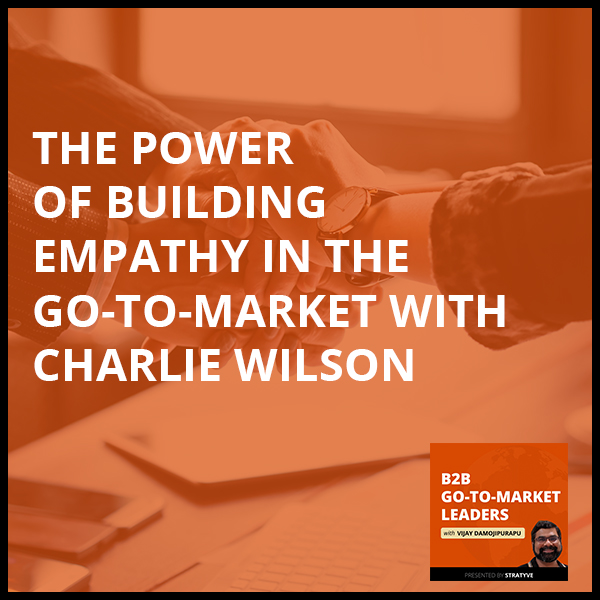




 Proven leader with a mind for the big picture and an eye for the details. Twenty years of executive experience with pioneering technology, payments, and commerce companies. A natural networker, a quick study, and strong advocate of payment solutions for cannabis retail. Earned two engineering degrees: B.S., Arizona State University; M.s., Stanford University.
Proven leader with a mind for the big picture and an eye for the details. Twenty years of executive experience with pioneering technology, payments, and commerce companies. A natural networker, a quick study, and strong advocate of payment solutions for cannabis retail. Earned two engineering degrees: B.S., Arizona State University; M.s., Stanford University.
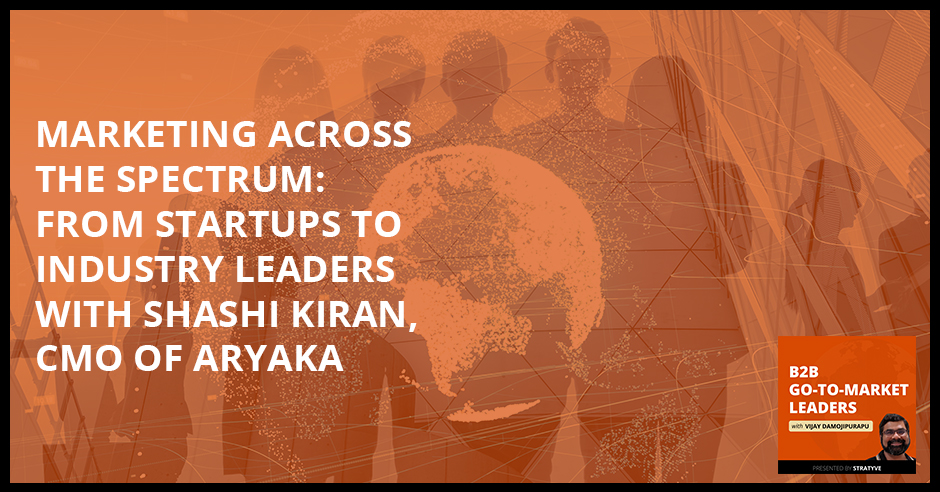



 A proven executive with 20+ years of experience in business and technology roles. I adopt a growth mindset and enjoy driving outcomes that create impact, value and deliver a positive experience. Building trust-based relationships based on integrity, authenticity and avoiding politics are core to my personality. I’ve been involved in marketing, sales, business development and product management at large global companies and smaller startups. Love solutions and connecting the dots to win big! Meritocracy, passion and humility are key ingredients of my team-building formula.
A proven executive with 20+ years of experience in business and technology roles. I adopt a growth mindset and enjoy driving outcomes that create impact, value and deliver a positive experience. Building trust-based relationships based on integrity, authenticity and avoiding politics are core to my personality. I’ve been involved in marketing, sales, business development and product management at large global companies and smaller startups. Love solutions and connecting the dots to win big! Meritocracy, passion and humility are key ingredients of my team-building formula.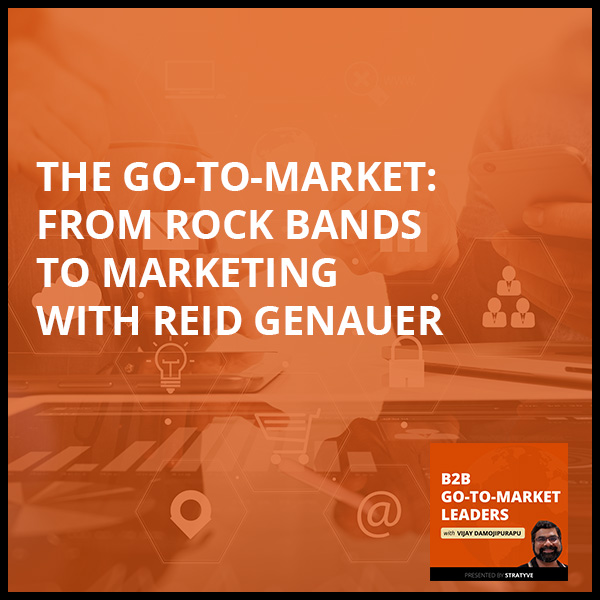
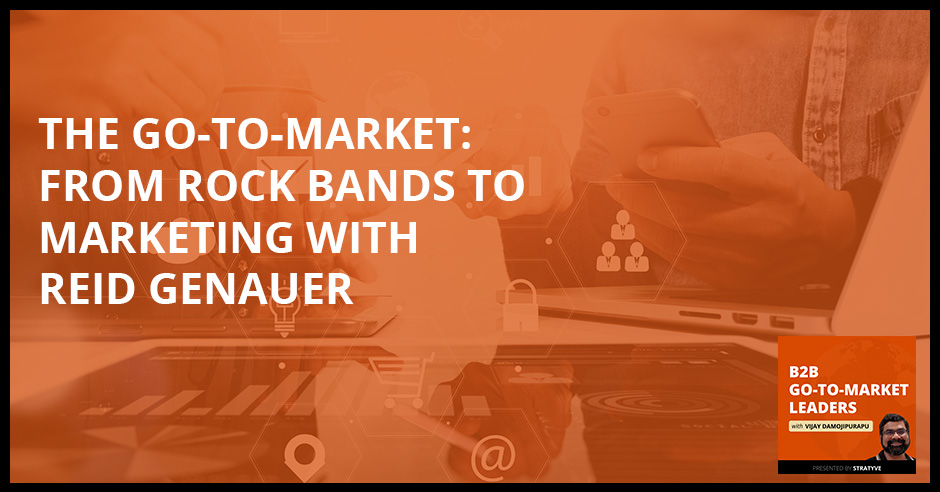



 Entrepreneur, Leader & Chief Marketing Officer (CMO) with deep experience in product market fit, data-driven growth, branding. Proven track record of scaling early-stage tech companies. Industry thought leader for mobile, social, video, music & media.
Entrepreneur, Leader & Chief Marketing Officer (CMO) with deep experience in product market fit, data-driven growth, branding. Proven track record of scaling early-stage tech companies. Industry thought leader for mobile, social, video, music & media.